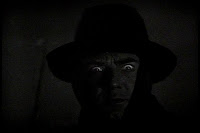Visiting my deeply religious grandmother around the age of 8 I was searching through the treasures of her spare room where I came across an extremely old, but well kept, copy of Bram Stoker’s Dracula. I read it from cover to cover in under a week and somewhat attribute this to the horror obsession that developed over the coming years. The book was not what I expected, I did not expect the diary entries or the subtlety of Count Dracula who I had always pictured as a more grotesque character than the original portrayed in Stoker’s timeless novel. Bela Lugosi captures this perfectly in Tod Browning’s 1931 Universal classic Dracula.
I am Dracula. I bid you welcome
By no means the first film on the subject, Dracula is however the most recalling of the tone and feeling of the book. The story is so familiar to us, depicting the journey through eastern Europe and the Carpathian mountains to Castle Dracula to finalise the property deal that will see the Count relocate to our fine isles. Ignoring the advice of the locals, Renfield continues on his journey with the tales of vampires and a crucifix for protection, neither of which serve any purpose as Renfield is soon hypnotised by the mysterious nobleman. Renfield, now enslaved by the Count, assists in the transfer of Dracula, in coffin, across the ocean as the ships crew become food for the vampire. From this point forth the young ladies of London have no safe haven as they fall for the mysterious, and undead charms of Lugosi’s most refined characterisation. Recognised as a vampire due to a lack of mirror reflection the Count continues to visit the young Mina and Lucy as we follow the plight of Van Helsing and his merry men plotting the downfall of the Transylvanian immigrant.
The strength of the vampire is that people will not believe in him
 Lugosi’s depiction could be considered part destiny, part accident. Nowhere near the first choice to play the part Lugosi had experience depicting the Count of the stage. Lugosi’s accent lent itself perfectly to the role and his look is that which has become synonymous with the character in the years since this films release. Unfortunately the success of the role led to Lugosi becoming horribly typecast in years to come which effectively left him unemployed, drug addicted and eventually dead (and buried in full Dracula clobber).
Lugosi’s depiction could be considered part destiny, part accident. Nowhere near the first choice to play the part Lugosi had experience depicting the Count of the stage. Lugosi’s accent lent itself perfectly to the role and his look is that which has become synonymous with the character in the years since this films release. Unfortunately the success of the role led to Lugosi becoming horribly typecast in years to come which effectively left him unemployed, drug addicted and eventually dead (and buried in full Dracula clobber). This film has an extremely important place in the history of the horror genre as its success was that which allowed Frankenstein (1932) and all the Universal horrors that followed to be produced. Without this we would not have been graced by the Hammer films or many of the horror genre staples. There have been many reissues of the film but for me the best version is the 1931 original. The original relies upon silence to build atmosphere which serves the film better than any soundtrack has been able to. Released on Valentines day in 1931, Dracula captures a romanticism of the of the unknown and the seduction of the young impressionable female by the worldly and exotic gentlemen. A fear of the unknown coupled with an erotic interest in the mysterious makes for, in my opinion, a more effective horror than it's production mate Frankenstein. Lugosi's Dracula versus Karloff's Frankenstein..? Lugosi for me every time.
Listen to them, the children of the night, what music they make.




No comments:
Post a Comment